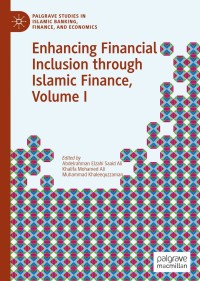Question
1. Bill loans $99,000 to his daughter Maura. Why would interest not be imputed on this loan? a. Interest would not be imputed because the
1. Bill loans $99,000 to his daughter Maura. Why would interest not be imputed on this loan? a. Interest would not be imputed because the loan is less than the amount of the annual exclusion. b. Interest would not be imputed because loans of $100,000 or less are exempt from both income tax and gift tax consequences. c. Interest would not be imputed because Maura has unearned income of less than $1,000. d. Interest would not be imputed because Mauras earned income is less than $1,000. 2. Jose decides to set up a trust for the benefit of his two sons, Raul and Jorge. He makes an initial contribution to the trust in the amount of $30,000 and gives each son the right to withdraw up to $15,000. In the current year, when the total trust assets are $52,000, Raul decides to withdraw $15,000, but Jorge does not withdraw anything. What is the result of Jorges decision to not withdraw any of Joses contribution to the trust? a. A taxable gift to Raul of $5,000. b. A taxable gift to Jorge of $15,000. c. A taxable gift to Raul of $15,000. d. None of the above. 3. Mike created a joint bank account with his son, James. At what point has a gift been made to James? a. When the account is created. b. When James is notified that the account has been created. c. When James withdraws money from the account for his own benefit. d. When Mike dies. 4. Which of the following transfers would result in a taxable gift? a. George gifts $14,000 to his daughter Georgette. b. Eli gifts $50,000 to his wife, Renee, who is a U.S. citizen. c. Alex gives his favorite employee, Lisa, a new car at Lisas retirement worth $20,000. d. Kevin transfers $20,000 to his ex-wife, Cindy, to help support their kids. They were divorced five years ago. CHAPTER 5 HOMEWORK QUESTIONS Estate Planning Chapter 5 Homework Questions 2018, MONEY EDUCATION 5. Which of the following transfers would not be considered a qualified transfer? a. Sarah paid $55,000 to XYZ University for her nieces tuition. b. Sarah pays $50,000 to her friend Satchel to pay for his medical expenses. c. Sarah pays $10,000 to ABC Hospital for her granddaughters medical expenses. d. Sarah pays $15,000 to Prestigious Preparatory School for her nephews tuition. 6. Wendy is a very generous single woman. Prior to this year, she had given $11,200,000 in taxable gifts over the years. In the current year, Wendy gave her daughter Rachel $500,000 and promptly filed a gift tax return. Wendy did not make any other gifts this year. How much gift tax must Wendy pay the IRS because of this transaction? a. $0. b. $15,000. c. $194,000. d. $200,000. 7. Which of the following gifts permanently removes the property from the donors gross estate? a. An outright gift. b. A gift where the donor has a right to continue to use and enjoy the property. c. A gift where the donor owner continues to earn income from the property. d. A gift where the donor owner has the right to get the property back at some point in the future. 8. Which of the following is NOT a reason for a father to make a lifetime gift of his home to his daughter? a. He would be relieved of property management and maintenance. b. The gift would reduce the total assets in his gross estate. c. Any income from the property will be taxed to his daughter. d. He can continue to enjoy the property even after it is titled to his daughter. 9. Which of the following statements about gift tax annual exclusion is incorrect? a. The gift tax annual exclusion is indexed for inflation. b. Each individual is allowed to give up to the indexed amount to as many donees as he or she wishes each year. c. The gift must be of a present interest. d. Gifts to Section 2503(c) trusts for minors are ineligible for the gift tax annual exclusion because they are future interest gifts. 10. The practice of gift splitting is available only as between: a. Spouses. b. A parent and natural child. c. A parent and an adopted child. d. Siblings.
Step by Step Solution
There are 3 Steps involved in it
Step: 1

Get Instant Access to Expert-Tailored Solutions
See step-by-step solutions with expert insights and AI powered tools for academic success
Step: 2

Step: 3

Ace Your Homework with AI
Get the answers you need in no time with our AI-driven, step-by-step assistance
Get Started


